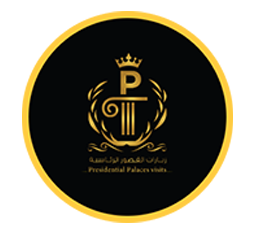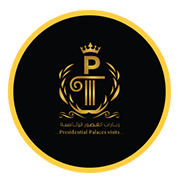Tahra Palace
The October War meetings
The palace of Tahira was built in the early twentieth century by Italian architect Antonio lachiak for Princess Amina Aziza, daughter of Khedive Ismail and mother of Muhammad Tahir Pasha, and was built in the Italian style, and this is evident in the marble stairs and magnificent alabaster ceilings.[1] Antonio lachiak is considered one of the greatest foreign architects who came to Egypt, and he designed a large group of downtown buildings such as Banque Misr’s main branch, Khedive buildings, the old building of the Egyptian Ministry of foreign affairs in Tahrir Square, the Nasiriyah school in champillion Street, and the RAML station building in Alexandria. He also redesigned the fire-damaged Abdeen Palace, which was built in wood, similar to the Old Opera House, which also suffered a fire in 1971. Lachiak was able to masterfully exploit the relatively small space of the Tahira palace compared to the rest of the royal palaces, to design the palace building with balance and gravity in shape. The palace is surrounded by a magnificent garden, forming a harmonious relationship between the building and the picturesque nature surrounding it. The interior furnishing and the choice of decorations played an important role in providing a sense of welcome and comfort to the visitor and the resident, where antiques and pieces of furniture were distributed within the rooms in harmony and beauty that reflects a good taste. Tahir Pasha’s only neighbor was his uncle, King Fuad, who was erecting the dome Palace.
Although Tahir Pasha was briefly married to one of his cousins, he was the only grandson of Khedive Ismail who lived single for most of his life, Mehmet Tahir Pasha was born in Istanbul, and Mehmet (Mustafa Shakib) Tahir was considered more Turkish than Egyptian after spending part of his childhood among the upscale suburbs of Istanbul. Tahir Pasha was avid and a lover of sports. As a result, he was the first president of the Egyptian Olympic Committee and patron of other sports activities including the Mohamed Ali Club, the Royal Automobile Club and the turquoise club.
During World War II, Tahir Pasha was loyal to the Germans and was placed, by order of Britain, under house arrest during part of World War II, first in a house south of Helwan, then in the military hospital in the dome and later in a prison in Sinai, at which time the Tahira Palace was a temporary home for other members of the Egyptian royal family. As for Tahir Pasha, he moved to a beautiful villa in Zamalek. In 1953, the Tahira Palace, along with the rest of the palaces belonging to the dynasty of the Muhammad Ali family, was confiscated by the state after the fall of the monarchy, and much of the precious Tahira Palace’s belongings appeared in state-sponsored and government-sponsored auctions in an attempt to fill its Treasury. In the meantime, new plans were being made for the Tahira Palace.
The palace hosted in the royal era King Saud Ibn Abdul Aziz of Saudi Arabia as a guest and also hosted in the Republican era after he left the rule and resided in it. It should be noted that during a visit by King Saud on March 23-29, 1954 to Egypt a historic all-night working session took place at the Tahira Palace and was attended by the King, president Mohamed Naguib and Gamal Abdel Nasser. The motivation was to establish a temporary settlement between Nasser and Mohamed Naguib, but ultimately, Nasser removed Mohamed Naguib from power in November of that year.
During 1973, the palace witnessed meetings in preparation for the October War, and there was activity of a different kind in the palace of Tahira. Very discreetly, parts of the Palace were converted into war rooms. Huge maps of the Sinai covered Belgian mirrors, and also memorabilia and paintings that adorned the walls, covered with images of the Suez Canal Zone. President Sadat directed from the Tahira Palace regarding the crossing of the canal. Over time, it was the residence of the widow of the Shah of Iran in 1980, and the Tahira Palace was already in a state of disrepair, with traces of neglect and looting beginning to appear on it, perhaps this was why Empress Farah Diba, with her Iranian family, preferred to rent a villa in the south of France. Among the residents of this palace was the prime minister of France Lionel Jospin, who stayed at the palace of Tahira during his visit to Egypt.
At the moment, given the atmosphere of secrecy that reigns around the news of the royal family, the Tahira Palace was the first to make this news. In one exception in 1996, the Daughters of King Farouk claimed that the palace was legally theirs because it belonged to their mother, Queen Farida, the claim may have been based on an advertisement in Al-Ahram newspaper on March 3, 1939, that Queen Farida had bought the palace from Tahir Pasha for 40,000 pounds. Their argument was that Farida Zulfikar was married to the King, was not a descendant of Muhammad Ali and therefore was not entitled to enforce the confiscation law. However, King Farouk’s three daughters from Farida did not win the case, and what was confiscated remained the same.

